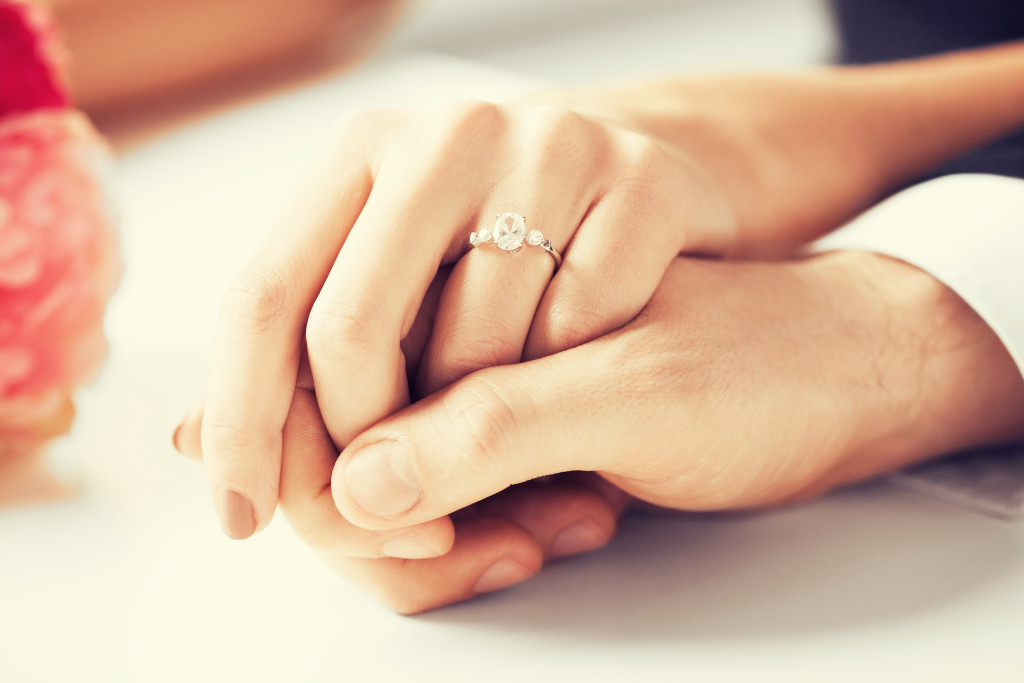Jewelry insurance doesn’t seem like an urgent matter when you’re planning a wedding. But losing your engagement or wedding ring is a lot more common than people think. And if yours has a precious gemstone, such as a quintessential diamond engagement ring, losing it may be an economic loss as much as an emotional one.
This is what jewelry insurance is for. Unfortunately, brides-to-be often get caught up with planning the wedding immediately after saying “yes”, so they fail to get their ring insured. Regardless of how busy the planning gets, it’s important to take the time and process the insurance.
Here’s everything you need to know about wedding jewelry insurance.
What existing insurance do you already have for your jewelry?
The first thing you should do is check your homeowner’s or renter’s insurance policy. Most policies extend the coverage to personal possessions inside your home, including your jewelry. However, the coverage for jewelry often has a dollar limit. If your engagement or wedding ring is worth more than the limit, then it’s under insured.
You also need to consider group limits, or the limit for the collective value of all the things that were lost or stolen. If a thief broke into your house and stole your ring, several laptops, and a TV, you may not have enough coverage in your policy to recover them all. Plus, you’ll most likely need to pay a deductible before you’re reimbursed for the damages.
One way to fully insure your wedding or engagement ring is to purchase a rider for your current homeowners’ or renter’s insurance policy. This is also called scheduling your personal property. Scheduled personal property are items that are listed separately from your other possessions. They have a separate dollar limit, so you can recover the full value of your rings in case they’re lost or stolen.
Most policies don’t require you to pay a deductible for scheduled items.

What to look for in a jewelry insurance policy
Coverage is among the crucial things you should inspect in a jewelry insurance policy. A good policy covers all contingencies, whether your ring is stolen, damaged, or lost accidentally. Most insurers will list special circumstances that they won’t cover. Be sure to note those.
Check if your policy covers repairs or partial loss. This coverage will be useful for scenarios where you lose the ring’s center diamond or if the setting is damaged.
Wedding and engagement ring insurance generally costs around $1 to $2 for every $100 of value. But the price can go up if you live in a city or a house where the risk of theft is higher. You can try to lower your premiums by keeping your rings in a safe or installing a top-grade home security system. These measures will reduce the risk for the insurer, so they may be willing to offer you lower premiums.
You also need to check the insurance company’s terms for reimbursement. Some will look for a replacement themselves while others will ask you to find one yourself but only from certain jewelers. There are also insurers who’ll just pay you the amount in a check as compensation.
Ring Appraisal
First, get an appraisal. It’s best to have your ring appraised immediately after the purchase. Go to an independent certified appraiser because most insurers won’t accept an appraisal from the store where you bought the ring.
It’s a great idea to have your ring appraised every two to three years since the value of fine jewelry and precious metals change regularly. Doing this will let you know if your insurance coverage is still enough.
Ultimately, having your jewelry insured is a prudent move, especially with the high average cost of wedding and engagement rings. Also, keep a file of all your jewelry, including photos, certificates, receipts, and appraisals. Although these documents won’t keep your jewelry safe, they make it easier for you to recover your possessions if they get lost or stolen.

